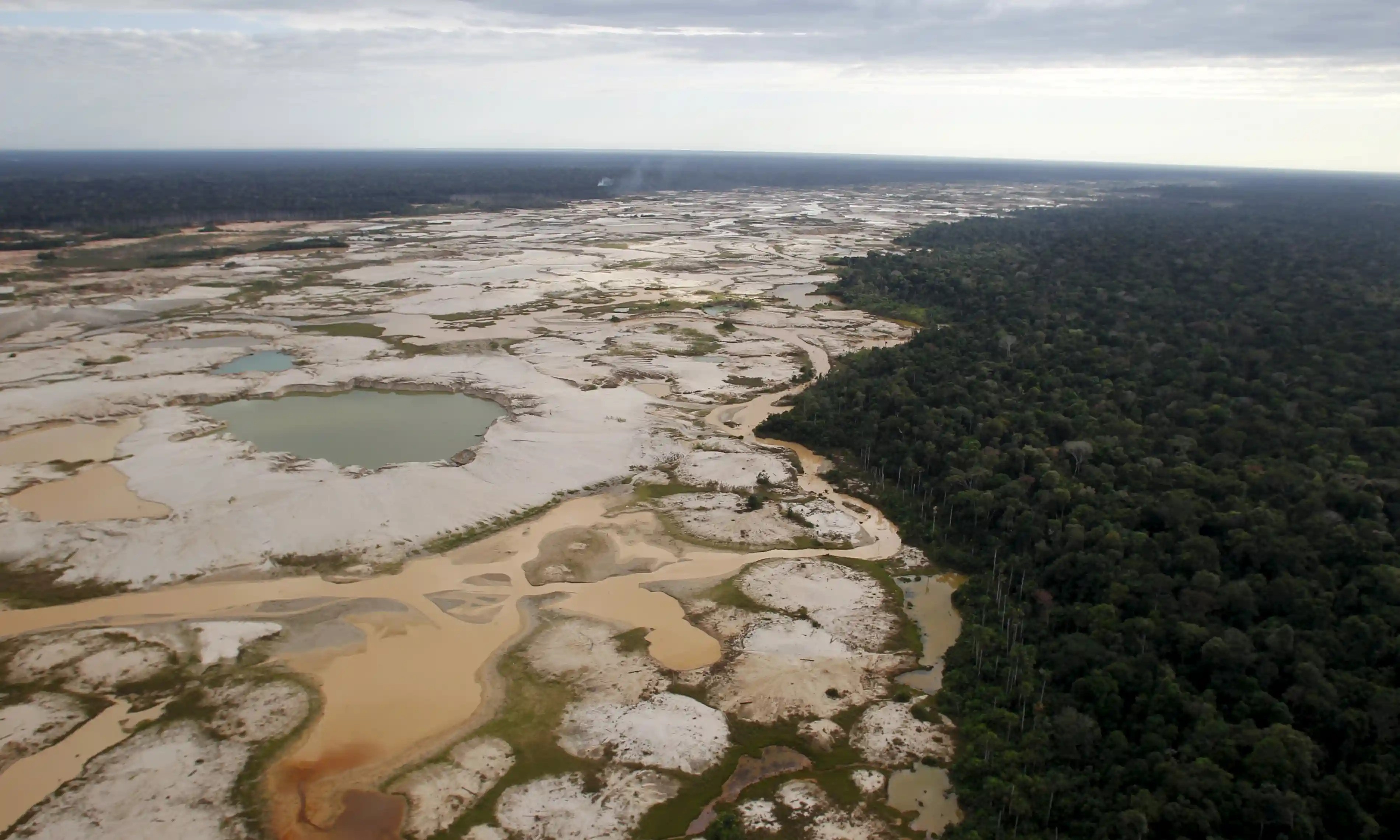The vast expanse of biological diversity within the Peruvian Amazonian landscape is breath-taking, but it stands in stark contrast to the grim reality faced by its 1.5 million inhabitants. Hindered by geographic inaccessibility and government neglect, this region lacks essential support systems. This neglect, coupled with abundant natural resources and limited formal employment opportunities, has created a breeding ground, for what can be described as a ‘perfect storm’– the rampant proliferation of illegal mining throughout the Peruvian Amazonia.
Illegal mining is one of the most critical problems in the Amazonian regions, serving as a catalyst for a plethora of criminal activities including reckless deforestation, tax evasion, violence, corruption, and erosion of state authority. The value of illegal gold exports now surpasses that of drug trafficking, establishing illegal mining as the primary illicit economic activity in Peru. Further, The Financial Intelligence Unit of Peru estimates that this illicit activity has mobilised around USD 3,721 million in the past three years, overshadowing other criminal activities in terms of financial impact. The industry also deprives the Peruvian state of more that USD 130 million, in uncollected taxes.
Given the profound ramifications of illegal mining on the lives and well-being of Peruvian citizens, urgent policy interventions are imperative. This article sheds light on the impact of illegal mining in the Peruvian Amazonia and explores effective approaches to address this persisting security problem.
Economic and Governance Implications
The problem of illegal mining in this region, extends beyond its immediate impacts, affecting local economies and governance in the Peruvian Amazon. This reality is starkly evident in Madre de Dios, where informal and illegal mining activities constitute a substantial portion of the total gold production in Peru, accounting for 22% to 28% of the country’s total output. Further, approximately, 90% of mining activities are illegal or informal, contributing to over 66% of total exports. This dominance over the regional economy, has created informal employment opportunities, generated wealth for local communities, and enhanced their purchasing and saving capacities.
The economic reliance on the illegal mining industry has also perpetuated a precarious status quo, wherein state institutions struggle to enforce laws or provide essential public services. Supply chains operate at the margin of the law, providing informal employment and wealth accumulation opportunities, further exacerbating the challenge of enforcing regulations. This convergence of economic significance and state weakness forms a symbiotic relationship, empowering criminal organisations and undermining effective governance.
Ecological Devastation of Illegal Mining
With more than 60 percent of Peru’s territory situated within the Amazon region, ecological ramifications of illegal mining emerge as a critical concern. Forest loss and degradation are the largest contributors to greenhouse gas emissions and among the top three activities driving these ecological crises is illegal mining. Operating without formal permits or legal supervision, the extractive nature of this illicit industry inflicts severe harm and distortion upon local natural environments.
Between 1985 and 2017, devastation in Madre De Dios, was an alarming 95,750 hectares for gold mining activities alone. A satellite image analysis from the Amazon Scientific Innovation Centre, shows this as an area larger than the city of Lima. Such widespread destruction highlights the urgent need to address the environmental toll caused by illegal mining operations in the Peruvian Amazon.
A multisectoral approach to combat Illegal Mining
Addressing the multifaceted crisis of illegal mining demands concerted efforts and unwavering political determination from the Peruvian government. Central to this endeavour is the formulation and implementation of cohesive emergency policies between the key state sectors, including the Military, Justice, Production, Energy, and Economy.
Drawing from past successes, the Mercury Operation, deployed in the Madre de Dios region, provides a roadmap for effective intervention. The Operation yielded significant environment benefits, reducing deforestation by an impressive 92% in the vicinity of the Malinowski River, adjacent to the Tambopata National Reserve and the Interoceanic Highway. The operation’s success extended beyond environmental conservation, as it effectively dismantled illegal mining operations through enhanced coordination between the Army, National Police, and the Public. This multisectoral approach, not only curtailed illegal mining activities but also ensured that criminal organisations faced judicial repercussions justice, thereby preventing legal backsliding.
Conclusion
Illegal mining remains a pervasive and entrenched issue in the Peruvian Amazonia, impacting the economy, governance and the daily lives of local inhabitants. Recognising the multifaceted nature of this challenge, a multisectoral approach emerges as the most effective strategy for comprehensive mitigation.
Through such concerted efforts, criminal organisations can be dismantled, formal employment opportunities can be extended to underdeveloped regions, and citizens can be guided along the path of development outlined by Peru’s public policy objectives. By addressing illegal mining through a multidimensional lens, Peru can not only protect its natural resources and uphold the rule of law, but also pave the way for sustainable growth in the Amazonian region. Thus, through collaborative and resolute action, the nation can strive towards a future where the Peruvian Amazonia thrives in harmony with its people and environment.




